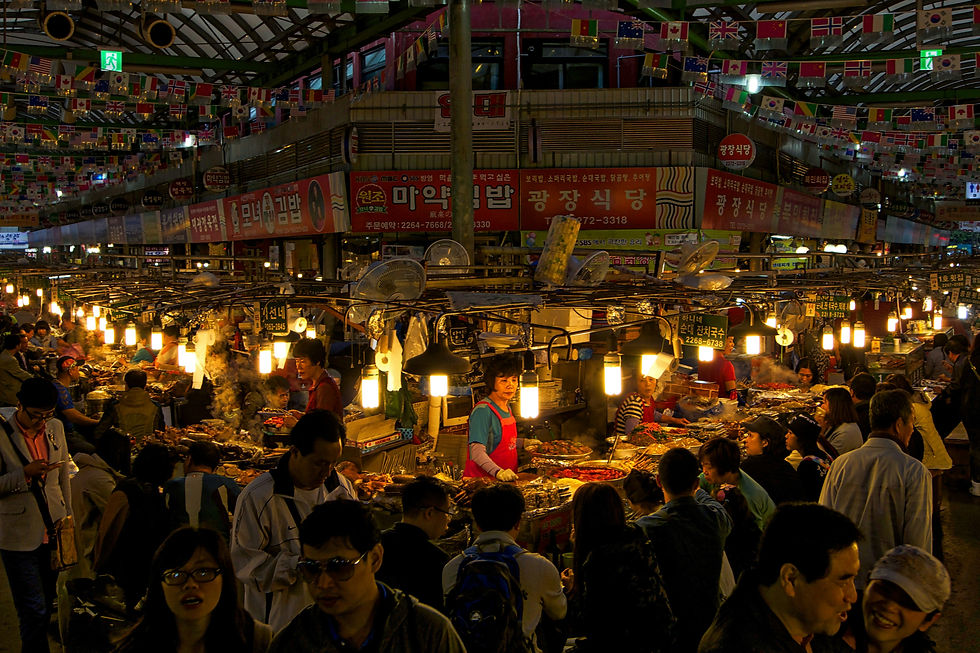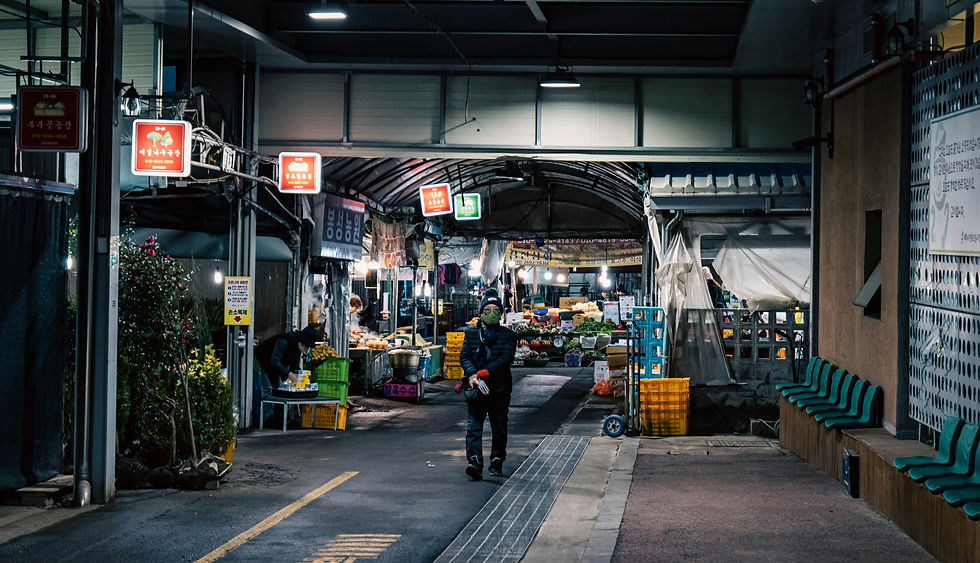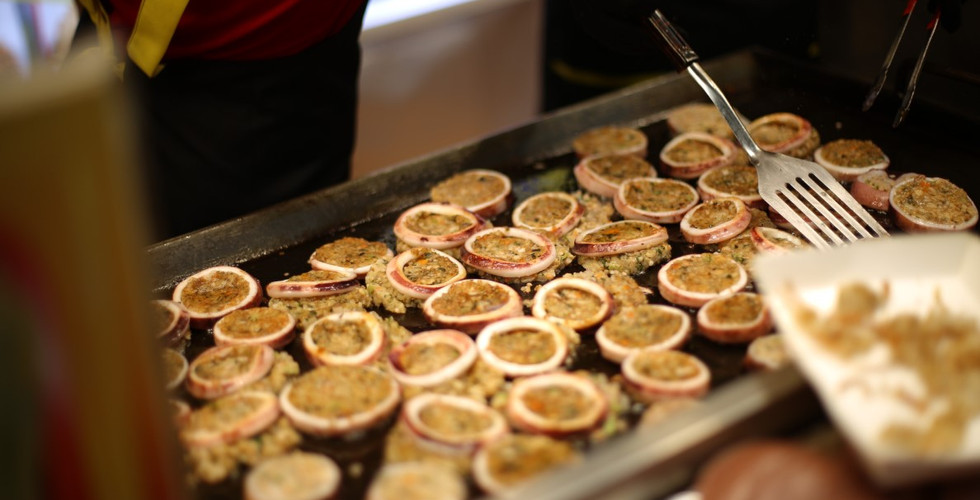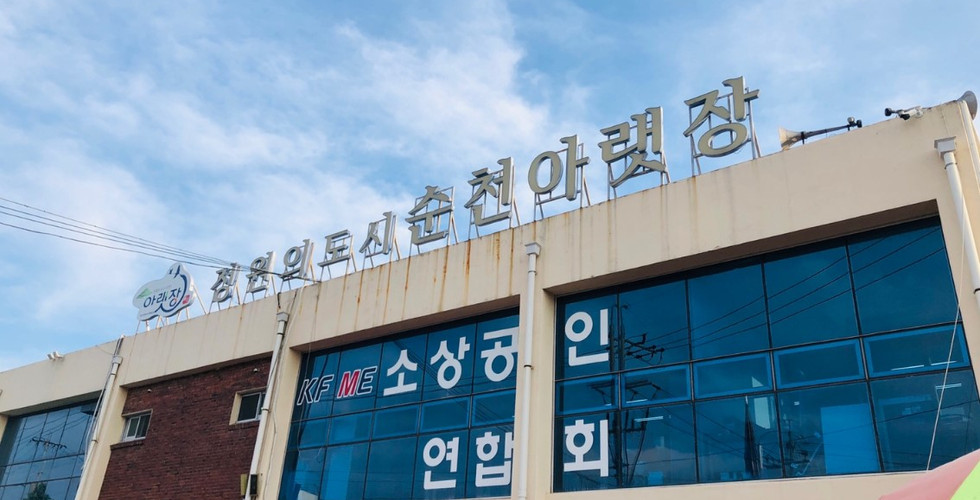Traditional Markets Where You Can Feel the Flavors and Warmth of Korea
- zone tp
- Aug 15
- 5 min read
※ TriPriend app offers discounts and free vouchers for a variety of Seoul cafes, restaurants, and facilities.
To download TriPriend app, please click the banner below.

While department stores and supermarkets are nice, traditional markets full of life have become a fun part of sightseeing.

You'll find plenty to see, from fresh ingredients and street food to handmade crafts.

Traditional markets filled with local charm offer a taste of Korea’s flavors and warmth.

Explore the most famous traditional markets across Korea and discover their unique charm!

Let's begin😎

Sokcho Central Market is packed with fresh seafood and local specialties, making it a must-visit destination when traveling to Sokcho. You'll find a wide variety of items here, including squid sundae and abai sundae, both of which are famous dishes from the Gangwon-do region. The market is always bustling with people, and it's common to see long lines of visitors waiting to get food to go. One thing you definitely shouldn’t miss is the sweet and spicy Korean fried chicken, called “dakgangjeong.” As you walk around the market, it’s not unusual to spot people carrying boxes of dakgangjeong in both hands—it’s that popular. Shops like Mansuk Dakgangjeong and Jungang Dakgangjeong are among the most famous, but there are many others with their own unique flavors, so try whichever suits your taste. In addition to the ground floor, which mainly sells fruits, sundae, and fermented seafood, there’s also a basement sashimi center where you can enjoy fresh raw fish and seafood, and a second floor with variety stores and a supermarket to explore.

Address: 12 Jungang-ro 147beon-gil, Sokcho-si, Gangwon-do

Daegu Seomun Market is the largest permanent market in Daegu, known for selling a wide variety of goods including textiles, crafts, and food. It is said to have started around the 1600s and was once considered one of the top three markets in Korea during the Joseon Dynasty, along with Pyongyang and Ganggyeong, reflecting its long and rich history. The market is huge, consisting of eight zones and boasting an impressive 5,500 or so shops. Many stores specialize in fabrics, as cotton—the main raw material—has long been produced in this area. You can easily find textiles, clothing, bedding, curtains, and bags in most of the stores. The market is also home to beloved food spots that are popular with both vendors and visitors. Hearty Korean dishes like knife-cut noodles and barley rice are commonly enjoyed here. One place you definitely shouldn’t miss is Miseongdang, famous for its flat dumplings and tofu pouches—it's a must-try food destination in Seomun Market!

Address: 50 Dalseong-ro, Jung-gu, Daegu

Pohang Jukdo Market is best known for its seafood, but it's actually a large-scale traditional market that forms the heart of Pohang’s main commercial area. It boasts the largest scale along the eastern coast of North Gyeongsang Province, with around 1,500 shops, and the interior is well-organised and clean. As Pohang is renowned for its fresh seafood, Jukdo Market is a must-visit for both locals and tourists. With around 200 sashimi restaurants packed into the area, you can enjoy fresh raw fish all year round at affordable prices. Often, when you buy sashimi, it’s linked with nearby eateries where you can eat your seafood right away by just paying for the side dishes, which adds to the convenience. Here, you can also find special ceremonial dishes unique to the Gyeongsang region, such as whale meat and dombaegi. Dombaegi is salted shark meat that is prepared as soup, skewers, or pancakes—an unusual dish you can only try in certain parts of Gyeongsang-do!

Address: 13 Jukdosijang 13-gil, Buk-gu, Pohang-si, Gyeongsangbuk-do

Jeonju Nambu Market is the central hub of distribution in the Jeonju area and remains a lively and evolving place today. True to Jeonju’s reputation for great food, the market is home to many well-known eateries serving dishes like sundae with rice soup and bean sprout soup, making it a must-visit spot for anyone traveling to the city. After a major fire left the market in a somber state, young entrepreneurs began opening shops one by one, breathing new life into the space with the “Youth Mall” area. This section is full of unique workshops, eateries, and cafés, making it fun to explore. One of the highlights of Nambu Market is its night market, held every Friday and Saturday. There, you can find a wide range of street food, from “gundaeria(army burger),” a nostalgic burger meal for Korean soldiers, to grilled small octopus skewers brushed with sauce. While the traditional flavors of Jeonju are always a treat, the market also offers special handcrafted goods like woodwork, ceramics, and embroidery—each made with care and creativity.

Address: 19-3 Pungnammun 1-gil, Wansan-gu, Jeonju-si, Jeonbuk-do

Gwangju Yangdong Market is often called “the kitchen of Gwangju” because of its diverse goods and abundant food offerings. It is the largest market in Jeollanam-do and has shared more than 100 years of history with the citizens of Gwangju. True to Gwangju’s fame for fermented skate (hongeo), about 90% of the fermented skate consumed nationwide is traded here. Fermented skate has a strong smell and a sharp, tangy flavor that many people either love or hate, but since you’re in Gwangju, why not be brave and give it a try? It’s also a good idea to start with hongeo muchim, which is unfermented skate mixed in a sweet and sour sauce. The market is also famous for its chicken street, featuring two popular choices: the hearty Yangdong fried chicken and the crispy Suil fried chicken. Other unique treats include the budget-friendly feast noodle soup called Cheonwon Guksi, priced at just 1,000 won, and lettuce-wrapped fried squid topped with onion soy sauce called Sangchu Twigim—delicious snacks that keep visitors coming back.

Address: 238 Cheonbyeonjwa-ro, Seo-gu, Gwangju

Suncheon Aretjang is a famous market where you can find a variety of affordable agricultural and marine products from Suncheon, Yeosu, and Beolgyo. You can see the market spread out across eight zones, divided by daily necessities, seafood, grains, food, and more, filling every corner. Because of this, it is the largest and most vibrant among the country’s five-day markets, offering plenty to see. Here, a “five-day market” means a market that opens every five days, and this one is held on days ending in 2 and 7. But don’t be disappointed if you miss those dates—there’s also a night market held every Friday and Saturday from 6 PM to 10 PM that welcomes tourists with food trucks, lively events, and performances, showcasing the energetic charm of a traditional market. One of the most famous foods here is jeon (Korean pancakes), and it’s common to see people enjoying a variety of jeon, fried crabs, and makgeolli (rice wine) together.

Address: 60 Jangpyeong-ro, Suncheon-si, Jeollanam-do


















































































































